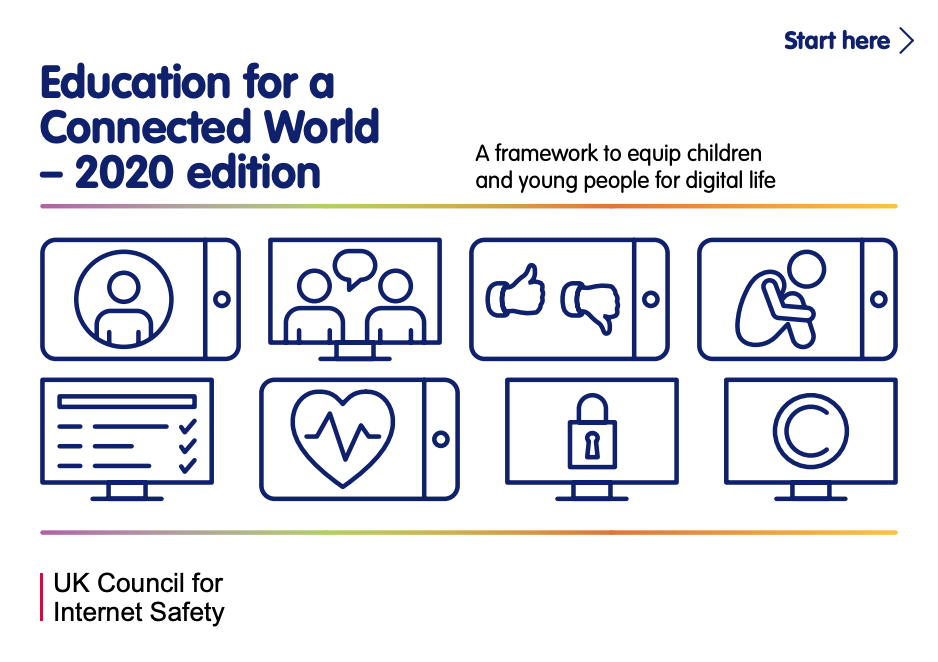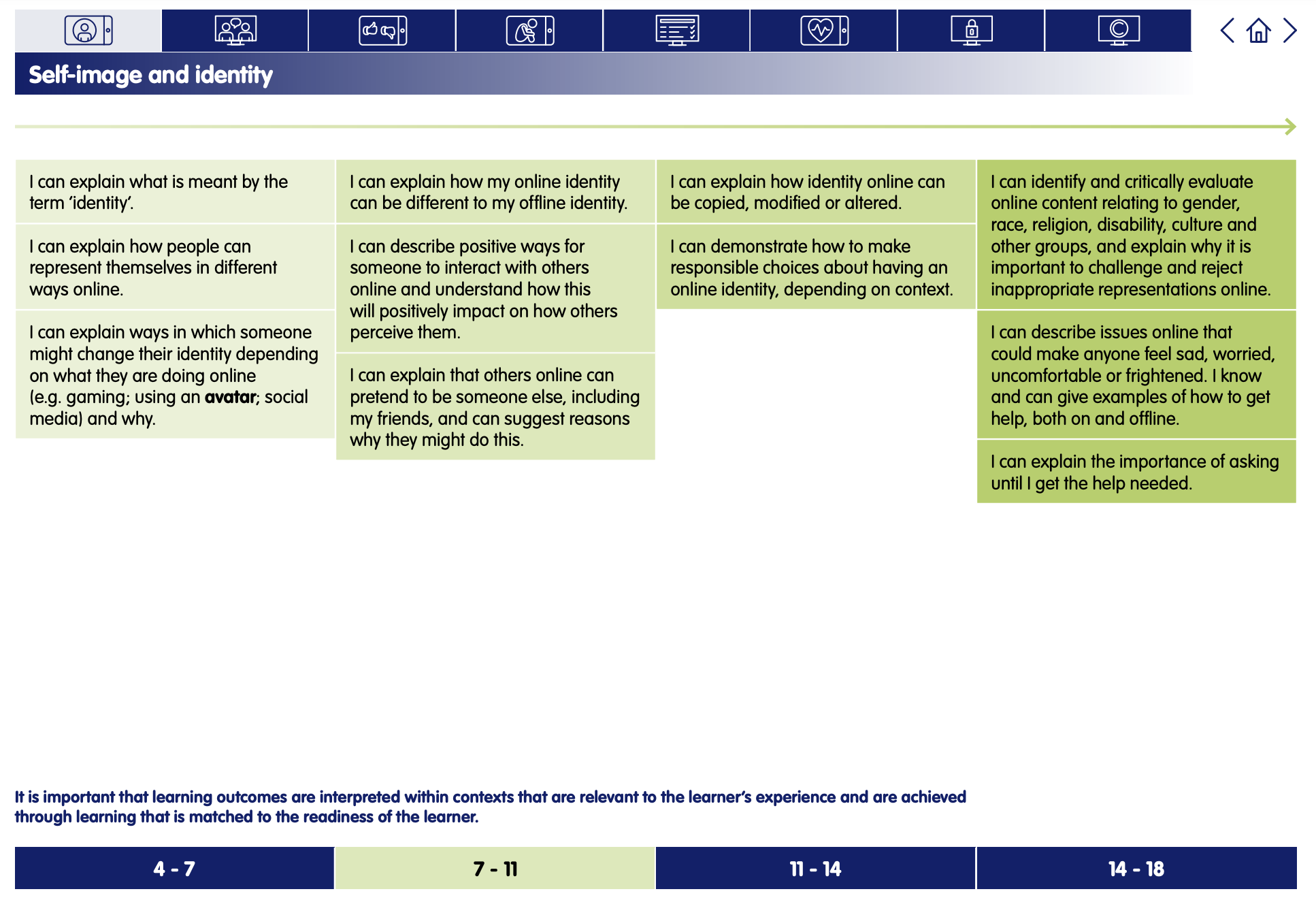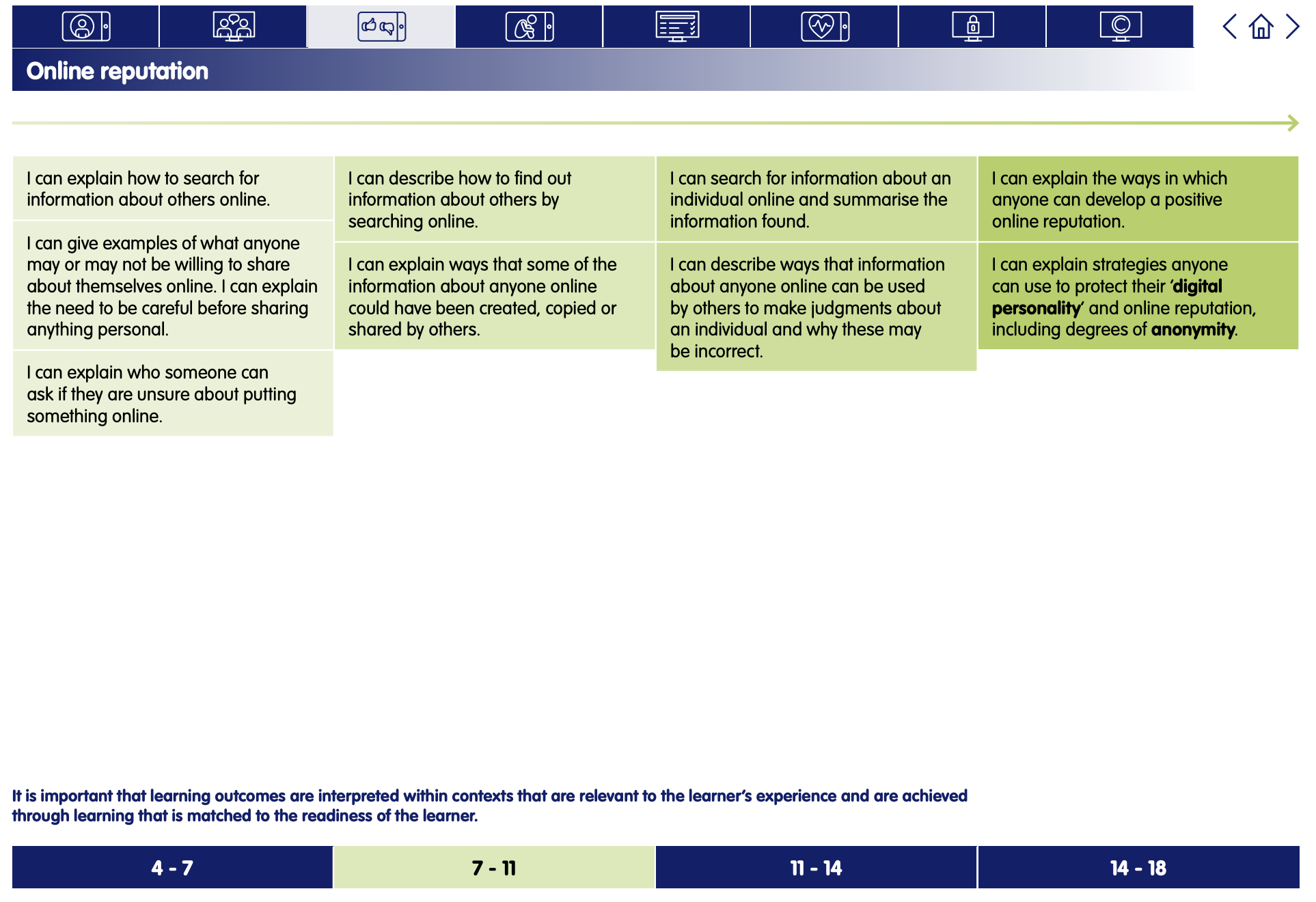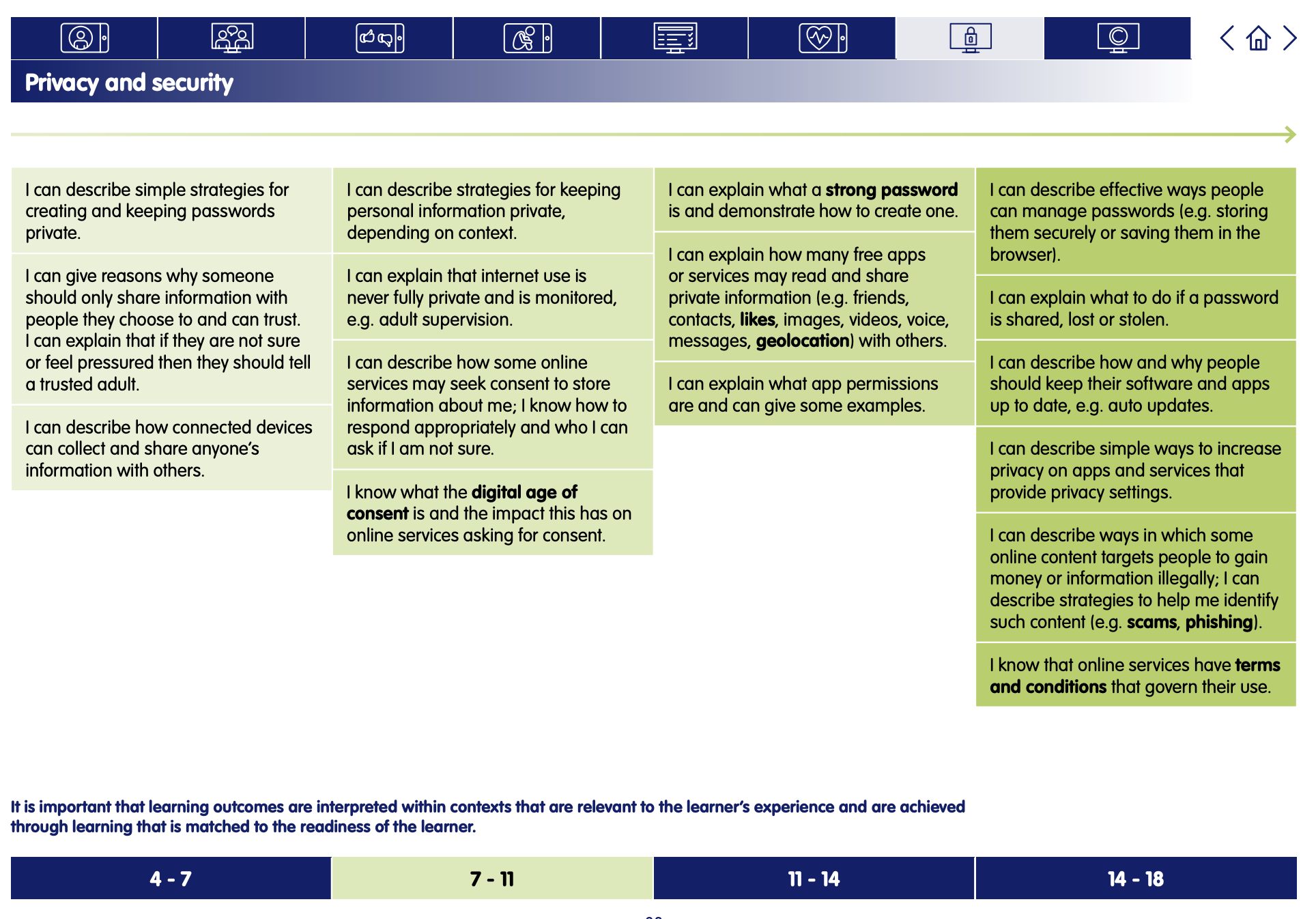Digital Trails
Digital Literacy and Online Safety (Y3) - Lesson 3
A note about this lesson

This lesson is taken from Common Sense Education’s excellent Digital Citizenship curriculum. Their resources are shared for free under A Creative Commons Attribution- NonCommercial- NoDerivatives 4.0 International License.
You can find the original resources HERE.
Objectives
- Learn that the information they share online leaves a digital footprint or "trail"
- Explore what information is OK to be shared online
Lesson 1 - Device-Free Moments
Lesson 2 - That's Private
Lesson 3 - Digital Trails
Lesson 4 - Who's In Your Online Community?
Lesson 5 - Putting a STOP to Online Meanness
Lesson 6 - Let's Give Credit
Links to Education for a Connected World.
This lesson from Common Sense Media's Digital Citizenship curriculum links to the following strands from the Self-image and identity, Online reputation, and Privacy and Security sections of the Education for a Connected World framework.
Introduction - Follow the Digital Trail
Does what you do online always stay online? Students learn that the information they share online leaves a digital footprint or "trail." Depending on how they manage it, this trail can be big or small, and harmful or helpful. Students compare different trails and think critically about what kinds of information they want to leave behind.
Before the lesson: Cut out the Digital Trail Squares in advance, keeping the squares for each animal in two separate piles.
Say: Today we're going to watch a video called "Follow the Digital Trail." Have any of you heard of the word "trail" before?
Invite students to respond, and define trail as a path or track that someone can follow. (Slide 3)
Show the Follow the Digital Trail video on Slide 4. As they watch, have students pay close attention to the types of information that are and aren't OK to share online.
Say: In the video, Feet was talking about a digital footprint. What is a digital footprint?
Invite students to respond. Clarify that a digital footprint is a record (or trail) of what you do online, including the sites you visit and the things you share. (Slide 5)
Ask: What information does Feet say NOT to share online?
After students have had a chance to share, project Slide 6 and review: Private information such as one's full name, address, phone number, age, birthday, school name.
Define private information as information about you that can be used to identify who you are. (Slide 7)
Ask: What information does Feet think is OK to share online?
After students have had a chance to share out, project Slide 8 and review: Personal information such as hobbies, favorite things.
Animal Tracks
Place the Digital Trail Squares on the ground in two different trails, keeping Mervin the Mouse's and Ellie the Elephant's trails separate from each other. You can also place them in different places around the classroom to see if students can find them.
Say: Mervin the Mouse and Ellie the Elephant were playing a game online and noticed there was a chat box. They thought it would be fun to talk to the other players and started to share some information about themselves. The only problem is that they forgot to ask their parents if it was OK first.
All of you are detectives at the Little Foot Detective Agency. As a detective, you have been hired to find out as much as possible about Mervin and Ellie.
Divide students into groups of four. Distribute the Animal Tracks Student Handout to every student and explain that while they are working together, they should each keep detailed notes and answer the reflection questions on their own handout. (Slide 9)
Invite students to go on a hunt for information around the classroom. Let them know that the information that Mervin and Ellie posted can be seen by anyone on the internet, including the detectives. Each group should follow the digital trail of both animals. Stagger the groups so that they follow the trails at slightly different times. Have them answer the two questions on the handout once they are done.
OK to Share?
Invite each group to report to the rest of the class what they learned about each of the animals. As a class, complete the chart on Slide 10.
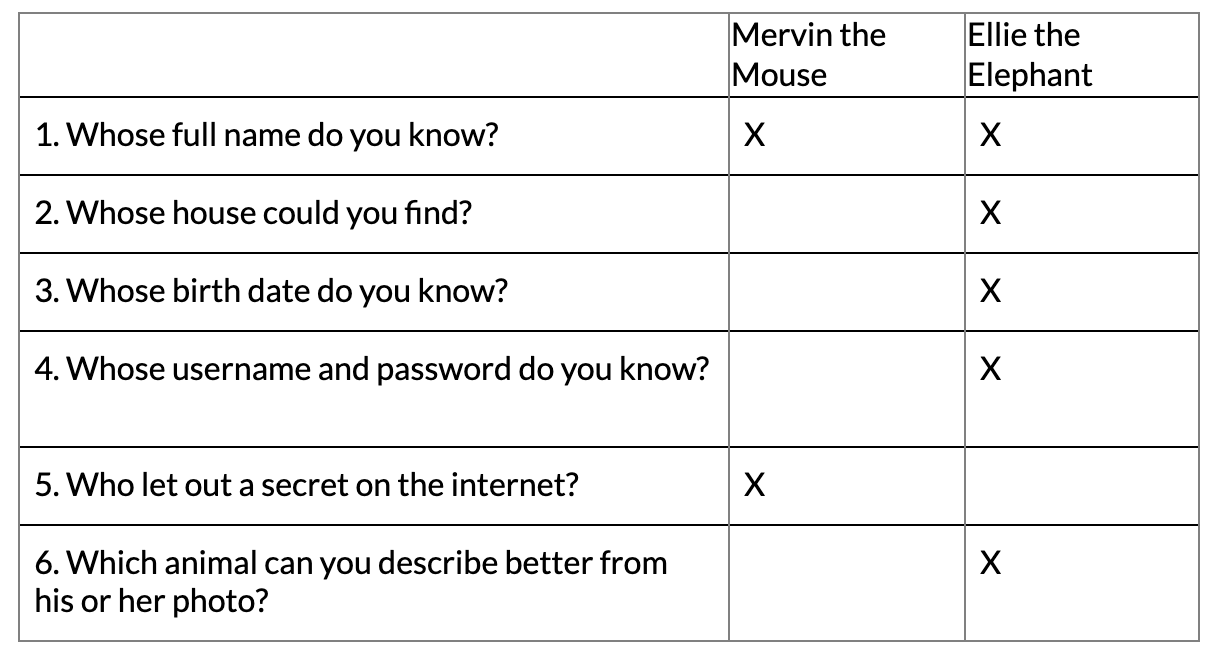
Ask: Who can the detectives find out more about, and why?
Explain that the answer is Ellie, since they now know where she lives, what she looks like, and a lot of private information about her life.
Ask: Is there anything that Ellie or Mervin posted that could be a problem for them?
Invite students to share. Explain that while it is OK to share fun and interesting information online, sharing private information like where they live or their full name is unsafe, since the internet is a public space where strangers can see their information. And sharing secrets online can hurt other people's feelings.
Explain that it's important to think carefully about what we share online because the information is permanent. Define permanent as something that lasts forever. (Slide 11)
Project Slide 12 and have students summarise which information is OK to share online and what is not OK. Add their responses to the chart. Suggested answers:
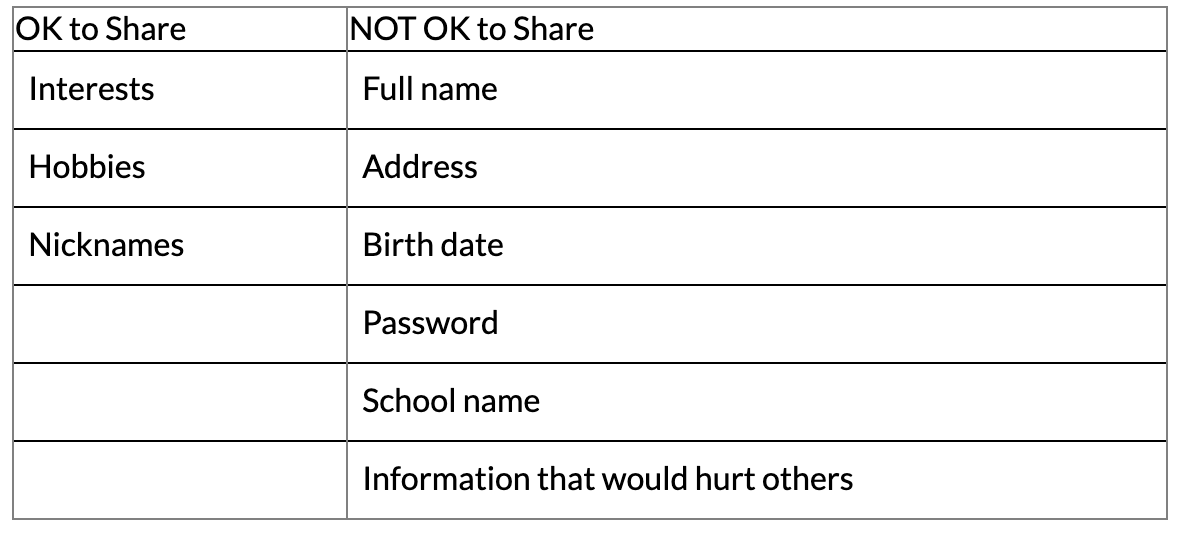
Emphasise that students should ask their parents or caregivers for permission before sharing any information about themselves online.
Plenary - Pause & Think Moment
Say: Today we learned about digital footprints, which leave a permanent trail about ourselves on the internet. Now take a moment to reflect on what information is OK to share online and what isn't.
Have students complete the Pause & Think Moment on the Animal Tracks Student Handout. Read the directions aloud and allow students to complete the reflection independently. (Slide 13)
Invite students to share their reflections with the class. Collect handouts to assess student learning.
Send home the Family Activity and Family Tips.

